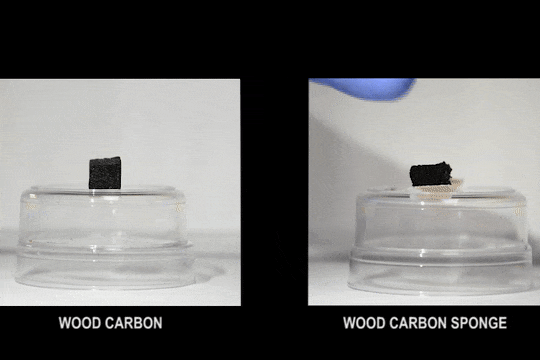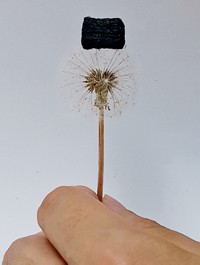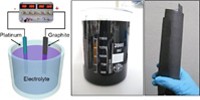Advertisement
Grab your lab coat. Let's get started
Welcome!
Welcome!
Create an account below to get 6 C&EN articles per month, receive newsletters and more - all free.
It seems this is your first time logging in online. Please enter the following information to continue.
As an ACS member you automatically get access to this site. All we need is few more details to create your reading experience.
Not you? Sign in with a different account.
Not you? Sign in with a different account.
ERROR 1
ERROR 1
ERROR 2
ERROR 2
ERROR 2
ERROR 2
ERROR 2
Password and Confirm password must match.
If you have an ACS member number, please enter it here so we can link this account to your membership. (optional)
ERROR 2
ACS values your privacy. By submitting your information, you are gaining access to C&EN and subscribing to our weekly newsletter. We use the information you provide to make your reading experience better, and we will never sell your data to third party members.
Materials
Process converts wood into a squishy sensor
Scalable approach may provide energy storage solutions
by Carmen Drahl
March 18, 2018

Carbon-based materials that bounce back when you press them are in demand for flexible electronics and energy storage devices alike. Most of the available options have limitations, though: They come from nonrenewable sources, have inferior electrical properties, or are difficult to manufacture on scale. Now, researchers have revealed a compressible material with promising electrical properties from a sustainable, if somewhat surprising, source—wood.
University of Maryland, College Park, engineer Liangbing Hu presented the work today in the Cellulose & Renewable Materials Division at the American Chemical Society national meeting in New Orleans.
Previous work in Hu’s lab showed that wood carbon, a blackened material generated by heating wood to high temperatures, can serve as a battery anode. Wood carbon is so fragile, however, that pressure from a person’s thumb is enough to pulverize it.
To make spongy materials suitable for additional applications, Hu, postdoctoral researcher Chaoji Chen, and colleagues got inspired by honeycombs, which have a wavy lattice that stands up to compression. They hypothesized they might be able to chemically change wood’s architecture to achieve a similar effect. Indeed, by stripping away lignin and hemicellulose from a block of balsa wood, they transformed the wood’s rigid, boxlike cell walls into a lattice of arch-shaped layers of cellulose, confirmed by scanning electron microscopy. Balsa wood’s thin cell walls likely contributed to the success, Chen told C&EN. “We tried other kinds of wood but failed to achieve the compressible structure,” he said.

The wood sponge rebounded from about 10,000 cycles of compression, and it functioned reliably in a prototype strain sensor that could be used to track physical activity. “When we press the sponge, the contact area between the curved layers increases,” thus boosting electrical conductivity, Chen explained. The researchers published this work on March 1 (Chem 2018, DOI: 10.1016/j.chempr.2017.12.028).
Herbert Sixta, an expert on wood chemistry at Finland’s Aalto University who was not present at Hu’s talk, called the team’s publication “one of the most innovative I have read in a long time.” Sixta pointed out, however, that the researchers employed boiling sodium hydroxide and hydrogen peroxide to remove lignin and hemicellulose, noting that greener routes are available.
“We will test greener methods in the future,” Chen said. In the meantime, the team has filed a provisional patent application and intends to commercialize the technology through Inventwood, a company Hu cofounded.





Join the conversation
Contact the reporter
Submit a Letter to the Editor for publication
Engage with us on Twitter